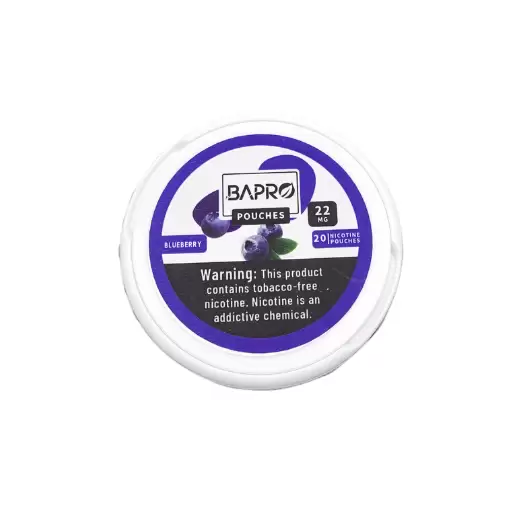The latest innovation in tobacco harm reduction, these small packets are appealing to a growing number of smokers seeking new smoking cessation aids – so read on for more information about nicotine pouches, referred to by some as streaming tobacco, but for reasons that will become clear, we prefer to call them pouches. Nicotine pouches stand as the latest form of Nicotine Replacement Therapy (NRT) that has become popular in recent years. In some ways, these pouches represent the third wave of modern tobacco harm reduction. After years of decline, consumption of cigarettes and other combustible tobacco products has begun increasing again.
The rise of nicotine pouches marks a significant shift in the approach to NRT. Historically, individuals looking to quit smoking have relied on patches, which slowly release nicotine through the skin, or gum that releases nicotine as it’s chewed. While effective for many, these methods often leave users yearning for an alternative that better mimics the act of smoking or using tobacco products, without the harmful effects associated with tobacco combustion.
Nicotine pouches step into this space as an innovative solution. Developed by leading nicotine pouches manufacturers, these products are designed to be placed under the lip, allowing nicotine to be absorbed directly through the oral mucosa. This method closely replicates the nicotine delivery system of smoking or snus use, providing a familiar sensation for users, but without the smoke, spit, and smell associated with traditional tobacco products.
The allure of nicotine pouches lies not just in their nicotine delivery method, but also in their tobacco-free composition, which eliminates many of the carcinogenic risks associated with tobacco use. As the popularity of these products continues to rise, they represent a new frontier in nicotine replacement therapy, offering hope and a potentially more effective tool for those committed to quitting smoking. This introduction sets the stage for a deeper exploration of nicotine pouches, their effectiveness, and how they compare to other NRT options.More content:The Ultimate 2024 Guide: Europe’s Top 6 Nootropic Pouches for Cognitive Enhancement

What Are Nicotine Pouches?
Nicotine pouches are a new type of nicotine replacement therapy (NRT) that supplements the traditional forms such as patches and gums in helping people stop smoking or reduce harm from tobacco consumption. They are made of small pouches containing a synthetic nicotine formulation not derived from tobacco leaves, making them different from traditional smokeless tobacco products, such as snus. The pouches are designed to be placed between the lip and gum, where the nicotine is absorbed through the oral mucosa into the bloodstream.
Nicotine pouches are completely tobacco-leaf-free. Their ingredients – purified nicotine, flavourings, sweeteners and an absorbing filler made from plants – address, for the most part, the health concerns raised by tobacco. Absorbed beneath the tongue, nicotine pouches open up a cleaner, arguably less toxic route around the risks of a life without nicotine.
Because nicotine pouches are easy to use, nice to wear and more socially acceptable than cigarettes or even snus, they are gaining in popularity. Convenience is an important factor: users can easily pop a pouch in their mouth and remove it when the rush is over. No smoke, no smell and no need to spit, which is required by traditional chewing tobacco and snus, leaves you looking and smelling clean.
In addition to the health and practical benefits of being smoke and spit-free, the experience of nicotine pouches, with their speedy onset of effects, appears to be nearer to the experience of smoking or snus than, say, nicotine replacement therapy such as the patch on one’s arm or nicotine gum or lozenges. This might appeal to some who would like to permanently quit smoking – or snusing – but who do so wanting to retain some of the habits and rituals of the behaviour.
Furthermore, the careful chemistry behind nicotine pouches enables the nicotine to slowly release, ensuring a sustained amount of nicotine to stave off withdrawal cravings. This slow release is a major factor in their success as an NRT product, and the emergence of pouches as a new quitting-tobacco tool.
Overall, nicotine pouches are an important advancement in nicotine replacement therapies, and can become a preferred substitute for smokers attempting to quit through their convenience, discretion and controlled release of nicotine.
Comparative Analysis: Nicotine Pouches vs. Other Smoking Cessation Aids
On the path to giving up smoking, nicotine replacement therapies (NRT) are one of the best-known options. Those who are determined to quit use them to wean themselves of their puffing habit. Nicotine pouches have entered the arena recently as a modern, smokeless and thus arguably less dangerous potential replacement for nicotine consumed from plant-based tobacco. This comparison explores the relative strengths and weaknesses of nicotine pouches compared to other well-established smoking-cessation aids such as patches, nicotine gum and vaping, in terms of health risks and success rates.
Nicotine patches and gum represent the mainstay of the older formulations of NRT. Patches deliver a sustained release of nicotine through skin for up to 16 hours, preventing most of the withdrawal symptoms caused by a lack of nicotine. Gum provides an almost on-demand nicotine boost with a rapid and well-controlled release into the bloodstream. Nicotine patches and gum are good at helping to reduce the physical symptoms of withdrawal from nicotine, but do little to address the behavioural component of smoking that many smokers find addictive.
Vaping borrows both the enactment methodology and socio-emotional logic of smoking: inhalation of nicotine in a vaporous form is an alternative to cigarettes and an alternative to the social grooming practices that made smoking inescapable for 100+ years. Vaping lacks tobacco combustion but adds harmful chemicals and additives in e-liquids as cause for health worry. The immediate impacts of these changes are not the concern; rather, the question is if and when the long-term health effects will become known, and how this will factor into alternative enactments of smoking amid current dangers and debates. Early signs point to compromised lung health and cardiovascular function.
Whereas nicotine pouches remove the purest smoking risk: the need to inhale tobacco Two bridgesthen appear to be crossed. Nicotine pouches are pitched as a less risky alternative to smoking or vaping because they deliver nicotine without combustion of the tobacco leaf and without breathing in a vape aerosol. The oral absorption of nicotine from the pouch means that craving relief occurs directly into the bloodstream, removing the need for the toxins that are created when tobacco or air is inhaled into our bodies.
One of the areas where researchers are starting to pay more attention is how well nicotine pouches are able to help people quit smoking compared with using other NRT products. Early studies indicate that nicotine pouches might be just as effective – perhaps more – than other products on the market. What makes nicotine pouches so effective in smoking cessation is that they deliver nicotine in a way that can duplicate both the chemical and behavioural dependence on cigarettes. Aside from being easy to use discreetly, they are nearly as effective as more ‘classic’ smoking-cessation products in helping smokers lose their chemical dependence on nicotine.
Well-known risks linked to combustible smoking include cancer, heart disease and respiratory disease, and there are no such adverse health effects associated with nicotine pouches: because the product does not contain tobacco burned to produce smoke, the act of nicotine absorption itself no longer carries the risks associated with exposure to tobacco combustion products. However, the health implications connected with lifelong exposure to other aspects of the nicotine absorptionvector through the oral mucosa are still being assessed. At present, the findings suggest a significantly reduced risk profile compared with smoking. But because nicotine is highly addictive, it is important that nicotine pouches are used responsibly.
To conclude, nicotine pouches appear to represent a new generation of smoking cessation aids, with a good balance between efficiency and health risk. They also aim at addressing the physical and behavioural addiction to smoking, which might contribute to increasing quit-rates. As research develops further, nicotine pouches may represent a new fundamental tool in the global movement of reducing the harm of tobacco use.
User Experiences and Societal Impact
Besides the historical narrative of nicotine pouches as a new smoking cessation product, a broadened understanding of their role will come from peoples’ personal journey to quit smoking, which provides insights into the real-world use of this product and its benefits and pitfalls; and leveraging the collective societal experience of having nicotine pouches available, including regulators’ reactions and adoption of public health policies in preventing tobacco-related harms.
User testimonials: ‘After three months, I cut back on smoking to just three per day’ Personal accounts from users who have traded in smoking, vaping, or chewing tobacco for nicotine pouches paint a varied picture. The format of the pouch allows users to wean themselves off tobacco without making noticeable compromises. John, a former two-pack-a-day cigarette smoker, stated: ‘Switching to nicotine pouches really cut back [my] smokes to way less than even a cigarette a day. Ups… I haven’t smoked in over six months now!’ Such user testimonials highlight the potential for nicotine pouches to have utility as cessation or harm-reduction tools.
However, the journey isn’t necessarily seamless. Some users struggle to get accustomed to a different form of nicotine delivery and to dosing it out reliably. ‘It was all right in the end, after doing it for a few weeks, but it took a couple of days for me and I would say a week or so for my husband,’ says Emily, another recent nicotine pouches convert. ‘It took a while to get your head around it not being predone, getting the right strength when you don’t want to feel dizzy or be too jittery.
Public health: the increasing popularity of nicotine pouches has also led to discussions among public health officials, regulators, and society at large about nicotine pouches’ place in harm reduction strategies and smoking cessation. For example, questions specifically around regulation are now at the focus for authorities who are asking how nicotine pouches should be classified based on available evidence, and how they should be regulated to ensure public safety without restricting nicotine pouches’ potential benefits. Public health recommendations also increasingly view nicotine pouches as part of harm reduction by endorsing nicotine pouch use among adult smokers who may want to quit, but discourages pouch use among non-smokers and young people.
Our own perception of nicotine pouches has also progressed, and there is a sense that they have a social role in helping shift the harm away from traditional tobacco products. Combined with a regenerating tobacco industry and the long experience with nicostros, advocates are increasingly comfortable with the new product, and increasingly discussing it in tobacco-control circles, viewing existing research as a good starting point rather than an obstacle. Yet continued research into the long-term health effects, and their potential as a stop-smoking aid, remains a crucial part of this conversation.
And finally, just as user experiences and testimonials tell us about the pros and cons of using nicotine pouches on an individual level, so the societal reactions to nicotine pouches inform us about how their use fits into the grand scheme of public health and smoking-cessation efforts. All these perspectives together showcase how a new and seemingly mild-mannered product could enable many people to take important steps towards a harm-reduced relationship with nicotine.

Considerations for Choosing Nicotine Pouches
There are various decisive factors we should bear in mind while considering a switch to nicotine pouches as a tool for quitting smoking. These considerations are important not only in working out whether nicotine pouches are suitable for use in the first place, and by whom; they are also important for the way in which such products are used, to ensure maximum benefit and minimum risk.
Nicotine Dependency Level
It’s helpful to know your level of nicotine dependency. Nicotine pouches are available in a range of different strengths to suit different levels of nicotine intake. Choosing the right nicotine strength from the start helps to manage withdrawal symptoms, while avoiding a situation where you overcompensate and end up alcohol dependent again.
Lifestyle Compatibility
Its delivery system also means that, unlike smoking traditional tobacco or vaping, nicotine pouches are incredibly discreet and easy to use, making it highly appealing to those who may feel uncomfortable smoking or vaping, as well as to those who have hectic and active lifestyles (or social lives) that may be inconvenienced by smoking a cigarette or using a vape.
Health Considerations
Nicotine pouches are alleged to be healthier than traditional smoking because there’s no combustion of tobacco, but the use of pure nicotine comes with its own health concerns, and some have expressed concerns that these products can increase heart rate and elevate blood pressure. It’s worth asking a doctor if nicotine replacement therapy is a safe approach when there are pre-existing health concerns.
Transition Strategy
For continuing smokers and those wanting to quit, as a part of a wider strategy of cessation, nicotine pouches could optimally fit into a comprehensive transition plan, including clearly set goals for nicotine reduction during the months to follow, behavioural support, and other NRT products where indicated. A ‘whole-of-person’ approach, in turn, is more likely to lead to successful smoking cessation.
Regulatory and Market Considerations
Checking the regulatory status of your region will also have an effect on the availability and usage guidelines of nicotine pouches. Variety is the spice of life, so experimenting with brands and product ranges are a good idea to see what works best for the user and their preferences.
Long-term Use and Cessation Goals
While nicotine pouches can play an important role in cigarette cessation, for many users the bigger goal is to quit nicotine altogether. Planning includes considering cessation down the road, perhaps through a gradual weaning from nicotine pouches.
Advice from Health Professionals
This allows healthcare providers to tailor advice specific to an individual’s unique health profile, smoking history and intended change in consumption habits. With professional guidance, use of nicotine pouches could complement a quit-smoking plan, and could also empower both healthcare providers and users to make informed decisions about their healthcare.
Overall, it can be concluded that making the decision to start using nicotine pouches involves weighing multiple factors. These factors include nicotine addiction, lifestyle, social and physical health issues, and the chosen path forward. With the support of their health care practitioners, individuals can make the best decision to help them quit smoking using nicotine pouches.
Conclusion: Weighing the Pros and Cons
Although nicotine pouches can serve as a smoking cessation tool, the story about them is more complicated. Nicotine pouches are a modern weapon in the fight against smoking, providing a combustible-free pathway for consuming nicotine. Shifting your nicotine consumption from smoking to the use of nicotine pouches can lead to a host of health benefits, not least a reduced consumption of toxic compounds produced during combustion. The debate around their use is a much more nuanced one, and to make the right choices in using nicotine pouches, you must first understand their benefits and potential drawbacks.
Perhaps nicotine pouches – with their concealable form and flexibility – offer people a way to quit smoking by allowing them to manage their nicotine craving. Some personal accounts and a growing body of research supports this idea. But these testimonials, whether they come from the public or scientific community, shouldn’t be taken as unqualified endorsements for nicotine. Our experience of feeling sick from excessive alcohol consumption or huffing gasoline tells us that getting high comes with risks. Using nicotine also brings risk, regardless of how it is delivered, and it is addictive.
Nicotine pouches are not as effective for some people as other products for nicotine replacement therapy (NRT). The truth is that successful cessation of smoking can be an idiosyncratic process, a combination of behaviour change and psychological support, sometimes with co-use with other NRT products – and for many, the ultimate goal is not just trade one product for another, but to let go of the nicotine and the dependence entirely.
However, as public health perspectives and regulation change, conversations about the role of nicotine pouches in quitting, and how they compare with other forms of tobacco and nicotine use, will no doubt move forward. Meanwhile, continued research into long-term health effects and efficacy could help to further clarify this issue for those who might want to use nicotine pouches to try to quit.
In conclusion, while nicotine pouches are a good addition to the arsenal of tools available to stop smoking, they can play a role in moving the needle on public health. They could eventually become a safer alternative to cigarettes and give many people the path to nicotine that they desire. Yet, only you can decide whether nicotine pouches are the best choice for you in quitting smoking. The journey is personal – and it’s best undertaken with informed choices and support along the way.

FAQs: Common Questions About nicotine pouches
Q1: What exactly are nicotine pouch?
A1: Nicotine pouch are small, pre-portioned packets containing nicotine, flavoring, and a plant-based fiber. They are designed to be used orally by placing them under the lip, where nicotine is absorbed through the gum. Unlike traditional tobacco products, they do not contain tobacco leaf, making them a smokeless and spit-free option for nicotine intake.
Q2: How do nicotine pouch work?
A2: When a nicotine pouch is placed under the lip, the nicotine is absorbed through the oral mucosa directly into the bloodstream. This method provides a discreet way to consume nicotine without the need for smoking or vaping.
Q3: Are nicotine pouch safer than smoking cigarettes?
A3: Nicotine pouch are considered a safer alternative to cigarettes because they do not involve burning tobacco or inhaling smoke, which can contain thousands of harmful chemicals. However, they still deliver nicotine, a highly addictive substance, and their long-term health effects are not yet fully understood.
Q4: Can nicotine pouch help me quit smoking?
A4: Some people use nicotine pouch as a tool to help manage nicotine cravings and reduce their dependence on cigarettes. While they can be part of a broader strategy to quit smoking, it’s important to consider them as one of several options and to seek support from health professionals for the best chance of success.
Q5: Do nicotine pouch contain tobacco?
A5: No, nicotine pouch do not contain tobacco leaf. They contain synthetic or tobacco-derived nicotine, but the product itself is free from tobacco leaf, distinguishing it from traditional smokeless tobacco products like snus or chewing tobacco.
Q6: Are there different strengths of nicotine pouch available?
A6: Yes, nicotine pouch come in various strengths, typically ranging from low to high nicotine content. This allows users to choose a product that matches their current nicotine intake and potentially use lower-strength options over time to reduce their nicotine dependence.
references
1.Digard, H., Proctor, C., Kulasekaran, A., & Malmqvist, U. (2020). A review of consumer preference studies of new oral nicotine products. Nicotine & Tobacco Research
2.Kotlyar, M., Doniger, S. J., Medvedovsky, M., & Gevirtzman, Y. (2021). Nicotine pouches: a review of safety and quality concerns. International Journal of Environmental Research and Public Health
3.Lindh, J. D., Nordgren, H. K., & Magnusson, K. E. (2020). Influence of pH on the Nicotine Release in Nicotine Pouch Products.
4.GlobalData Healthcare. (2021). Nicotine Pouches Market – Global Drug Forecast and Market Analysis to 2029
5.Hansson, A., Wengström, Y., & Lindh, J. D. (2022). Nicotine pouch use and associated factors: a cross-sectional study among Swedish adults.











